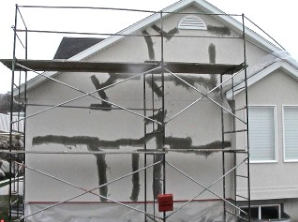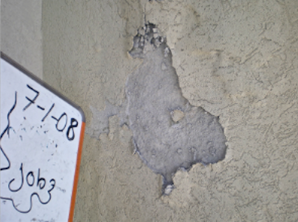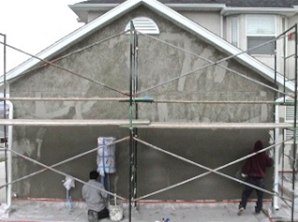Random cracking, for example, cracks that start at the corners of windows is considered normal.
http://www.stuccomfgassoc.com/industry/papers/PlasterCouncil_tech4_crack.pdf
Several things can be done to reduce the likelihood of cracking, such as hydrating the stucco by applying water during the summer if the surface is drying too quickly, or providing tenting and heating in the winter and letting the base coat completely cure before applying the stucco finish.
Stucco manufactures spent millions of dollars for special engineers to design their stucco systems. These stucco systems were then subjected to accelerated weather testing, both by the manufacture and the International Code Council (ICC). Once these stucco systems passed the testing they were sold to the public. It was understood by the manufacturers, engineers, and the ICC that cement based stucco systems were not flexible and would crack from structural or thermal flexing or movement. Cracks in a stucco system shouldn’t be blamed for a leak. Contractors that sell repairs by fixing the cracks don’t understand how stucco systems were designed to work. The building papers, the window, the roof, and other flashings behind the stucco system are what ultimately keep water from getting to the framing members and from coming into the home.
Isolated cracking and staining are an indication that there is a problem. The simple act of covering the cracks with new stucco finish or paint will not fix the problem. These patches are only a temporary cosmetic solution that covers up the problem and the extra coating of stucco actually keeps the wall from drying out and accelerates the dry rotting of the 2x wood framing and plywood sheathing. Random cracking is a cosmetic problem, which can be fixed only by using the proper techniques to control the movement, painting or re-finishing the stucco without reinforcing the cracks will allow the cracks to telegraph through the paint or new stucco finish.


Even though new stucco cannot be matched to old exactly, peeling and flaking as shown above, can be successfully repaired.

In the wall to the left, the cracks have been covered with a fiberglass mesh and base coat material. In the photo above, a new “skim coat” bonding/leveling agent has been applied.




